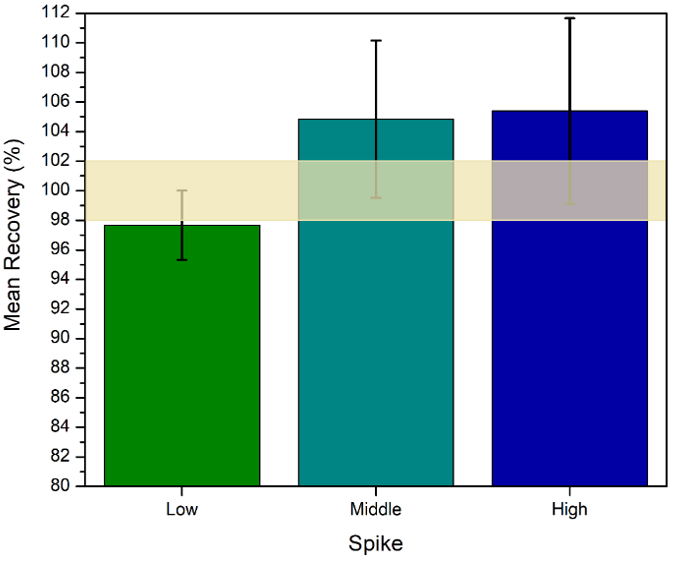VOLUME 16 NUMBER 2 (July to December 2023)

SciEnggJ. 2023 16 (2) 337-345
available online: October 20, 2023
*Corresponding author
Email Address: htmendoza@ucdavis.edu
Date received: September 22, 2022
Date revised: August 10, 2023
Date accepted: September 11, 2023
DOI: https://doi.org/10.54645/2023162XLE-38
ARTICLE
Modified Reinecke’s salt spectrophotometric method for quantifying choline chloride in feed additive
College, Laguna 4031, Philippines
2Department of Chemical Engineering, University of the Philippines
Los Baños, College, Laguna 4031, Philippines
Rampant choline adulteration in feedstuffs has been a huge problem in many parts of Asia due to the lack of a reliable standard method to quantify choline chloride (CC), the most common form of choline additive in feeds. Contemporary methods are either expensive, non-selective or require elaborate and sophisticated instrumentation. In this work, Reinecke’s salt spectrophotometric method was modified and extensively validated to quantify choline chloride in a feed additive sample. The existing method requires the use of a calibration material that might have questionable purity and longer time to prepare, and a solvent that is extremely volatile – issues that can be difficult to manage when analyzing many samples, which the modified Reinecke’s salt method was able to address and resolve. Method modification includes the use of ammonium reineckate as standard calibration reagent, and 70% (w/v) acetonitrile solution in water as solvent for analysis. The modified method is highly selective to choline, and is simple and economical, requiring only either a single or double beam UV-Visible spectrophotometer to carry out analysis. The modified Reinecke’s salt method was found to be linear from 0 to 1200 mg L-1 choline chloride equivalent and has a calibration linearity coefficient (r2) of 0.9995. Repeatability and intermediate precision studies gave RSD values of 0.30% and 0.50%, respectively, while recovery values ranged from 97.67 ± 2.34% to 105.39 ± 6.27% for different spike levels. Results from both precision and recovery studies were within the recommended range set by the Association of Official Analytical Chemists (AOAC). LOD and LOQ values were 2.83 mg L-1 and 9.42 mg L-1 CC, respectively, suggesting applicability of the method to samples with much lower CC content such as in finished feeds. Selectivity studies showed that there is no significant difference on the CC content in samples with and without amino acids present. Choline reineckate was stable both as dried solids and in 70% (w/v) acetonitrile solution in water for one week based on robustness studies. The modified method quantified 52.11 ± 0.85% (w/w) CC in a feed additive sample that reportedly contains 50% (w/w) CC. The result from the modified method was found to be both statistically different compared to the CC values obtained using AgNO3 (Mohr) titration and HPLC method. Trueness of the value obtained from the HPLC “gold standard” method could not be established, to which the modified Reinecke’s salt method gave a recovery value of 108.09%.
© 2025 SciEnggJ
Philippine-American Academy of Science and Engineering